Homemade Hummus
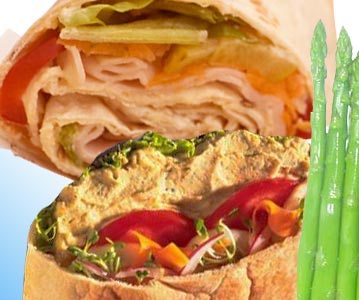
An authentic Middle-Eastern specialty, hummus has traveled thousands of miles and become popular as a dip sauce and spread, world over. What is it about hummus that accounts for its universal appeal? Is it the unique taste, the flavor, texture, diverse uses, variations, high nutrition value or low calories?
Homemade hummus recipes are healthier and more nutritious when compared to readymade hummus or the ones served in hummus eateries, which usually account for twice the amount of calories and nil nutrients.
To derive optimum health benefits, make hummus at home. Freshly made hummus has more nutritional value. Also, you can substitute, add or omit ingredients to enhance nutrition and flavor. Try hummus recipes like sabra hummus, roasted red pepper hummus and hummus without tahini.
Like other hummus specialists, begin with basic ingredients; try variations using healthy ingredients, experiment with different flavors to come up with signature hummus recipes.
What is Hummus?
Hummus is a dip or spread. The texture is smooth and creamy. It is usually used as a dip with vegetables such as carrots, peppers or cucumbers and with pita chips. As a spread it goes well with crackers or breads. Besides being used as a dip or spread, hummus goes well as a filling/stuffing too or can be used as an appetizer dish to accompany main courses. Hummus can be used in both vegetarian and non-vegetarian diets.
What is sabra hummus?
Authentic hummus served by an American brand called Sabra, Sabra hummus has evolved to be a staple of America's diet. The uniqueness of sabra hummus as compared to hummus served by other eateries is that sabra hummus is a smooth, rich, creamy dip with great consistency and mild flavor.
Sabra hummus is made with authentic ingredients including fresh chickpeas, real Mediterranean sesame tahini, authentic herbs and spices that contribute in whipping richer, smoother and tastier hummus. Sabra hummus comes in many flavor varieties including classic hummus or flavored with olives, garlic, roasted red pepper, pine nuts or lemon.
Is hummus nutritious, healthy?
Hummus is filling, nutritious and delicious. The main ingredient, chickpeas are relatively low in fat, high in fiber (both soluble and insoluble) and are an excellent source of complex carbohydrates and protein. There are other vitamins and minerals such as folic acid, zinc, potassium, copper and magnesium too.
Other ingredients in hummus recipes also contribute some additional protein and fiber, tahini - 3 grams of protein per tablespoon and 0.7 grams of fiber per tablespoon. Together, chickpeas and tahini contribute appreciable amounts of calcium, iron, vitamin E and powerful antioxidants. The blending of chickpeas and sesame seeds makes for a good combination of two good sources of nutritious foods.
Here are facts about hummus nutrition and hummus calories. Facts that prove that hummus looks good, tastes good and is good for health too.
- Hummus is rich in iron, a high protein diet most suitable for vegans.
- Hummus Glycemic index is around 12, it will not raise glucose levels; will give a satiated feeling for long hours after eating, a suitable food for dieters.
- Hummus contains no saturated fat, no cholesterol or sugar.
- Hummus with tahini is caloric. The ones made at home can be prepared by using tahini sparingly.
- Hummus without tahini is for those who want to consume fewer calories.
- Homemade hummus is additive free as it is usually made with 100% natural ingredients.
- Hummus contains considerable amount of omega 3 fatty acids, good for a healthy heart.
- Hummus is rich in folic acids, if taken by pregnant women it contributes to prevent birth defects.
- Tahini is a source of calcium, protein and B vitamins and essential fatty acids.
- Tahini is a source of vitamin E, which helps to reduce the rate of aging in body cells.
- An important ingredient of hummus, olive oil has high mono saturated fat content but is low in saturated fat. It helps regulate cholesterol and protects the heart from various diseases.
- Other ingredients, garlic and lemon are rich in antioxidants that reduce oxidative stress in the body. It contributes to better functioning of the immune system.
Making hummus
Chickpea also known as Garbanzo beans is the main ingredient of hummus. The second most important ingredient is tahini, sesame seed paste. Tahini is often quoted as 'peanut butter alternative'. It binds hummus together. Other crucial ingredients that are combined include olive oil, lemon juice, garlic and salt.
The main ingredient is cooked, mashed and then blended with the rest of the ingredients. You can substitute olive oil with canola oil; roasted garlic can be used instead of raw garlic, tahini can be substituted with peanut butter. Depending on taste and preferences, variety of other ingredients like spinach, cumin, potato, paprika, yogurt, kalamata olives, parsley, chili powder, cilantro, pine nuts are used in making hummus recipes.
For authentic taste, dried chickpeas are used in hummus recipes. All dry beans need to be presoaked preferably overnight or at least for four hours before cooking to replace water lost in the drying process. Also, this method ensures uniform texture and cooking time is considerably reduced and the chickpeas retain their shape.
Dried chickpeas like other beans will require 2 to 3 ½ cups of water for hydration. To make hummus, chickpea must be first hydrated, cooked and then cooled before use. This step can be skipped if canned chickpeas are used which make for an excellent substitute in place of dried chickpeas but there is likely to be a slight difference in terms of flavor and texture.
The process of making hummus is rather simples. You need a pan large enough to cook chickpeas, a strainer to strain and rinse chickpeas, a pressure cooker, a slotted spoon, a large mixing bowl and a sturdy fork or a food processor/blender to mash up the ingredients.
Homemade hummus recipes
Right from choosing the ingredients to serving homemade hummus, here is an easy-to-follow guide to whip up healthy, nutritious hummus.
Two alternatives: Homemade hummus can be made with frozen or canned ingredients, but tastes best with fresh ingredients. The ratio that gives best results is 4 parts of chickpeas with 1 part tahini.
Preparing the main ingredient: Soak chickpeas overnight in water. Water should be enough to cover the chickpeas. Next morning, drain the water before cooking. Cook chickpeas with enough water, preferably double the amount of beans. Let the water boil. Simmer gas. After 20 minutes to 40 minutes, check if the chickpeas are done. When chickpeas are cooked, drain them completely. Let it cool.
You can also cook chickpeas in the pressure cooker. Pressure cook until soft. Drain the water and use it to achieve desired consistency.
Preparing the second important ingredient: When you make your own tahini for homemade hummus, it only gets tastier and more nutritious. To make tahini, choose hulled or whole sesame seeds measuring three cups. Soak the sesame seeds in hot water for a day to remove the hulls, which float to the top. Crush with a heavy kitchen hammer to separate the bran from the kernels. Put the crushed seeds into salted water.
Remove the floating kernels. Preheat oven to 170-degree Celsius. Toast the kernels in the oven for 15 minutes. Do not let it turn brown. Add half-a-cup of olive oil and ground the toasted sesame seeds using a food processor with metal blades. Use a flexible spatula spoon to remove the paste and transfer to a tight fitting glass jar. Tahini does not require refrigeration. It can be stored in a cool, dry place and can be used for several weeks. But after opening the airtight container, it should be refrigerated.
Other basic ingredients: For the basic homemade hummus version, other ingredients like olive oil, lemons and garlic can be procured from any store.
Homemade hummus recipe - Basic version
Chickpeas 1cup
Tahini 1/3 cup
Lemon juice ¼ cup
Garlic 3 cloves
Minced garlic 1 tbsp
Extra virgin olive oil 5 tablespoons
Paprika 2 tsp (optional)
Chop three cloves and garlic. Transfer all ingredients except olive oil and paprika into the food processor container. Blend until desired consistency. Add additional water, if necessary to thin the hummus. Traditionally, hummus is blended until smooth and creamy. Some like a coarser, chunkier texture. Transfer the mixture into a bowl. Top with a drizzle of olive oil and sprinkle some ground paprika to taste. Check consistency preferably smooth and creamy.
A basic version of homemade hummus is ready for use. Serve with crackers, raw dip vegetables like carrots or celery or with pita bread or with pita chips.
Tips: If you are not using canned chickpeas follow the process of soaking dried chickpeas, cooking them etc. Use the boiled water in which the chickpeas were cooked to achieve the desired consistency. Alternatively, if canned chickpeas are used, make sure you store the drained liquid and use it to achieve the desired consistency. Try a variation by using garlic, salt, parsley, onions, cumin powder and or chili powder.
Hummus without tahini
There are some who like hummus recipes but detest the taste of tahini or are allergic to tahini. Homemade hummus without tahini is possible with little difference only in flavor though the end product will still be creamy and delicious. Or, when tahini is not available and you are eager to make hummus, simply substitute tahini with peanut butter/sunflower seed butter/ hemp seed butter or sesame oil.
Chickpeas 1 cup
Olive oil ¼ cup
Lemon juice 1 tbps
Cumin powder 1 tsp
Salt to taste
Blend all ingredients in a food processor. The texture should be smooth and creamy. Transfer to a bowl and serve with pita bread, pita chips or raw/boiled vegetables. If you wish to store, transfer homemade hummus into an airtight container. Use within 3 days.
Roasted red pepper hummus
If you think hummus recipes are bland, here is an excellent way to spice them up. Pepper comes in an array of colors. All peppers are rich in vitamins A, C and K. But red pepper has extra nutrients and has extra tang. Roasted red pepper in hummus adds flavor, color and crunch. Instead of buying roasted red peppers, prepare it at home and use it. Fresh ones are tastier.
Make roasted red pepper hummus a day ahead. Keep it refrigerated, and bring to room temperature before serving. Roasted red pepper hummus is usually used as a spread in sandwiches, with cold chicken, cold cucumbers and crisp lettuce or smears it on crackers with fresh chopped tomatoes or used as a dip with favorite vegetables
Garlic 2 cloves
Chickpeas 1 cup
Tahini 1/3 cup
Lemon juice 1/3 cup
Roasted red peppers ½ cup
Dried basil ¼ tsp
2-3 tbs olive oil and salt to taste
Roasted red pepper preparation: Wash the red bell pepper. Cut into 2 halves. Apply few drops of olive oil on the skin. Remove the seeds and stem. Roast the red pepper in the oven. Wait till the skins are charred evenly. Remove from oven and keep aside. Let it cool. Alternatively, you can roast it wholly on a grill. Allow it to cool and peel the skins off. Slice into desired size and shape and it's now ready for use.
Roasted red pepper hummus preparation: Chop the garlic. Transfer all ingredients except dried basil and roasted red pepper into a blender or food processor. Process until the mixture is smooth. Add basil and roasted bell pepper. Blend the ingredients.
Top of the Page: Homemade Hummus
Tags:#hummus #hummus recipe #hummus nutrition #hummus calories #how to make hummus #homemade hummus #healthy hummus #sabra hummus #hummus without tahini #roasted red pepper hummus
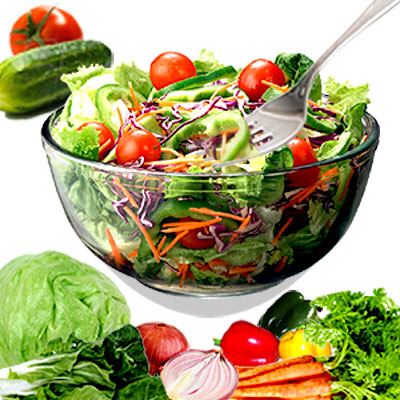 Food and Nutrition Facts
Food and Nutrition Facts Chamomile
Parsnip Soup
Dim Sum
Gazpacho Soup
Whole Grain Cereal
Jicama Nutrition
Bok Choy Stir Fry
Chia Seeds Benefits
Teff Nutrition
Kaniwa
Flax Seed
Wheatgrass Benefits
Kelp Benefits
Types of Chili Peppers
Medicinal Benefits of Pomegranate
Arugula Leaves
Maca Root
Pitaya Fruit
Benefits of Celery
Leek
Asparagus Benefits
Oyster Stew
Oyster Mushroom
Lupin Beans
Quinoa
Freekeh
Extra Virgin Olive Oil
Dill Pickle
Sauerkraut
Fat Burning Foods
Nutrition Chart
Food Combining
Calorie Counter
calories ...
Non Alcoholic Beverage
Punch Recipes
Food Label Nutrition
Homemade Sausages
Cooking Steak
Eating on a Budget
Budget Friendly Recipes
Quick Recipes
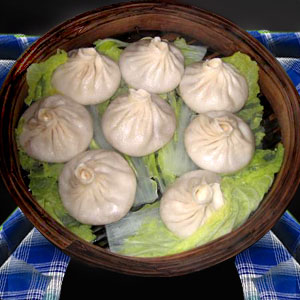 Healthy Packed Lunch
Healthy Packed Lunch Overnight Oats Recipes
Eggplant Casserole
Brunch Recipes
Burrito Recipes
Muffin Recipes
Cupcake Frosting
Apple Crisp
Stir Fry Cooking
Seafood Salad Recipe
Cooking Corn on the Cob
Finger Food Recipe
Sandwich Recipe
Bread Stuffing Recipes
Easy Chili Recipes
Picnic Recipes
Edible Mushroom Recipes
Mushroom Soup Recipes
Dip Recipe
Tapas Recipe
Corned Beef Recipe
Canned Salmon Recipe
Tilapia Recipes
Crumb Cake
Flourless Chocolate Cake
Regional Food
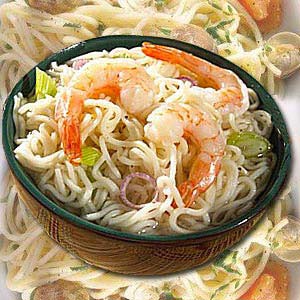 Lasagna Recipe
Lasagna Recipe Peruvian Ceviche
Chinese Food Recipe
Vietnamese Food Recipe
Malaysian Food
Korean Food Recipe
Indian Curry Recipe
Edible Rice Paper
Mexican Food Recipe
Quesadilla
Guacamole Dip
Italian Food Recipe
Spanish Food Recipe
Kosher Food
Falafel Recipe
Tandoori Chicken
Noodles
Canape
Couscous
Meatloaf
Chowder
Gumbo Recipe
Crockpot Recipes
Moroccan Food
Healthy Food
Pre Workout Snack
Matcha Tea
Simple food Swaps to Lose Weight
Foods to Beat Stress
Foods to beat Insomnia
Bone Density Foods
Prebiotic Foods
Kefir Grains
Agave Nectar
Spicy Trail Mix
Pesto Sauce
Homemade Hummus
Crab Cake Sauce
Bamboo Shoots Nutrition
Lemon Grass Plant
Butter Beans Recipes
Loose Green Tea
Seaweed Nutrition
Healthy Food
Low Fat Granola Bar
Steel Cut Oatmeal
Fruit Pizza
Pizza Toppings
Green Smoothie
Healthy Meal Planning
Delicious Mealtime Recipes
Heart Healthy Fats
Healthy Heart Recipe
Healthy Dinner Recipe
Healthy Dessert Recipe
Healthy Fast Food
Healthy Kid Recipe
Probiotic Food
Diabetic Friendly Foods
Fruit Salad Recipe
Bread Pudding
Tofu Recipe
Oat Bran
Broccoli Salad
Avocado Recipe
Iron Rich Food
Brain Foods
Antioxidant Food
Natural Diuretic
Low Fat Cooking Tips
Rice Pilaf Recipe
Low fat Chicken Recipe
Food Tips
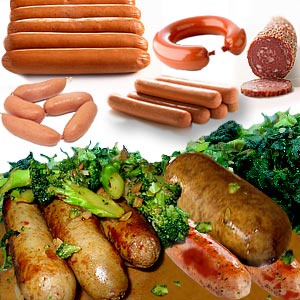
Sous Vide Cooking Technique
Natural Sugar Substitute
Stevia Sugar Substitute
Sunflower Seeds Nutrition
Bouquet Garni
Cake Decorating Tips
High Satiety Foods
Thanksgiving Dinner
Safe Food Storage
Frozen Food Storage Tips
Cold Storage Food Tips
Leftover Recipe
Food Pyramid
Dairy Free Food
Microwave Cooking
Food Intolerance
Homemade Ice Cream
Apple Cider Vinegar
Benefits of Honey
Beverage Cooler
Food Poisoning Symptom
Food Allergy Symptom
Food Addiction
Top of the Page: Homemade Hummus
Popularity Index: 101,735

